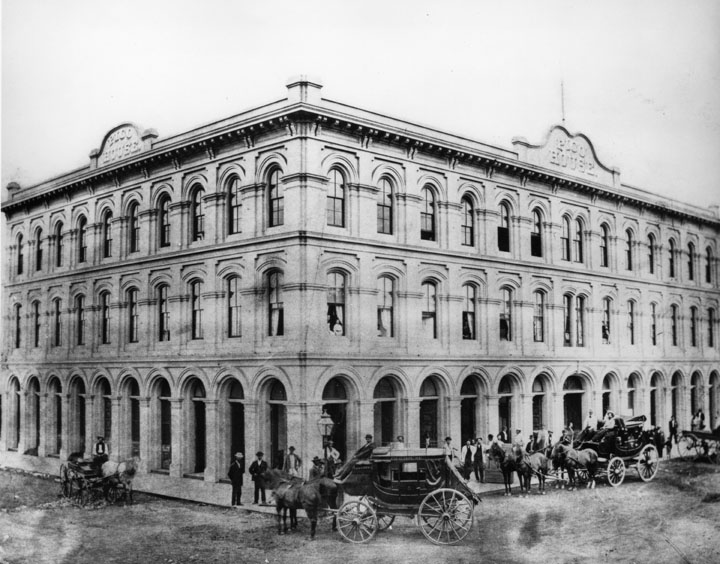
Thanks to (past Notebook on Cities and Culture guest) Nathan Masters of Lost L.A., I’ve returned to KCET, where I previously spent a year excerpting pieces of my book-in-progress A Los Angeles Primer (still collected on my author page here), to write a new series called “Los Angeles in Buildings.” It begins today with the Pico House, the booming city’s first luxury hotel built by California’s famously extravagant final Mexican governor Pio Pico:
Soon Los Angeles will have its new tallest building in the form of the 73-story Wilshire Grand Center, a billion-dollar hotel-retail-office complex that will no doubt open to fanfare commensurate with its scale. So, in its own day and for similar reasons, did the Pico House, a three-story hotel named for Pío de Jesús Pico, the last governor of Mexican-ruled Alta California before its 1848 annexation by the United States. After getting out of politics, Pico went on to make a fortune as a cattleman, and by the late 1860s he had the idea to build a hotel. And he wouldn’t just build a hotel, but a luxury hotel – and not just the most luxurious hotel in downtown Los Angeles, but the most luxurious hotel in all of Southern California.
The realization of this dream cost somewhere north of $80,000 (a princely sum in those days), an amount Pico and his brother Andrés raised by selling most of the land they held – and they held a lot of it – up in the San Fernando Valley. This bought, among other things, the services of Ezra F. Kysor, a Yankee who’d come west and become Southern California’s very first professional architect. Though the city’s architectural history holds Kysor in higher regard for the Cathedral of Saint Vibiana, built six years later and a half mile down Main Street, he took on the Pico House as his first project in Los Angeles, coming up with an Italianate Victorian design, something of an East Coast import that unambiguously signaled the end of the aesthetic isolation of the adobe period.
Pico also spent the money on serious opulence, by the standards of the time and place: 80 bedrooms, 21 parlors, and a French restaurant arranged around a central courtyard with a fountain and an exotic-bird aviary, all with gas light and running water, all behind an exterior finished to look like blue granite. It once even advertised an “elegant Billiard Parlor and Reading Room connected with the establishment,” targeting – and attracting – countless guests of means, who, after the Southern Pacific Railroad opened Los Angeles to the rest of the country, could take the hotel’s free bus shuttle straight in from the train station. It didn’t take long to get there; the parcel of land Pico used, which once belonged to his brother-in-law, was right on the Plaza, at one time the center of Los Angeles public life.
Read the whole thing at KCET.